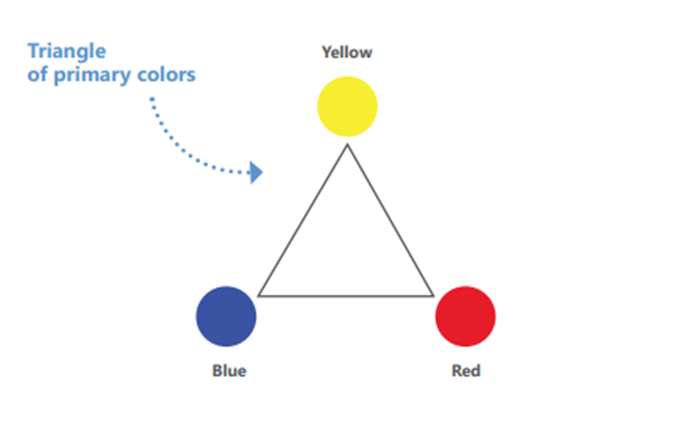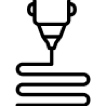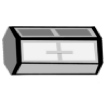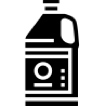Colors can be classified in 3 categories according to their composition: primary, secondary and tertiary colors. The primary colors group serves to create all of the other colors, through combinations made between the different categories.
This combination principle allows TCN to make numerous coloring products adapted to specific plastics.
Here is this principle in detail:
2.1 Primary colors
A primary color, also called elemental color, is a color that cannot be created by mixing other colors. There are 3: red, blue and yellow. These primary colors, mixed together, make it possible to obtain the other colors of the visible spectrum.
These colors are the ones that you can find in bold letters in the TCN Color Charts. They are the purest and brightest colors from our ranges.
For a better visualization, many theorists presented the primary colors at the angles of an equilateral triangle.

2.2 Secondary colors
When 2 primary colors are mixed in equal parts, a secondary color is obtained.
Here are some examples:
Orange is the secondary color from the blend of the yellow and red primary.

Violet is the secondary color from the blend of red and blue primaries.

Green is the secondary color from the mixture of the blue and yellow primary.

For the representation of the secondary colors, we take back our triangle of the primary colors by superimposing the same basic triangle, but inverted, by indicating at its angles the secondary colors.
When one adds a little bit of the third primary color to a secondary color, it is said that the tone is broken, it becomes tertiary.

You apply this principle when you want to make a tailor-made color by mixing TCN dyes that are miscible with each other. Therefore, you can easily reproduce a color, whether it is to dye an additive manufacturing part based on a particular RAL or to tint a CR-39® organic lens according to your own color range.
2.3 Tertiary colors
A tertiary color results from mixing at least 3 primary colors.
The color that is obtained depends on the quantities that are used in the composition. However, a color got by a mixture of bright colors is always duller than the ones which compose it.
That is the reason why our technicians recommend you our pure colors when you want to obtain bright colors, since the combinations allow you to make any color of the spectrum.
So this combination principle makes it possible to color polycarbonate lenses, CR-39® lenses and therapeutic lenses. It allows you to color all of your organic lenses with a precision in the shades and a great repeatability.
It is through this principle as well that the coloring of any type of polyamide such as TPU, PA12, PA11, PEEK can be achieved.
It also applies to the dyeing of additive manufacturing parts (3D printing), either with SLA, MJF, SLS or other technologies.
Another triangular drawing presents a few examples of tertiary colors. On this representation, if we trace a straight line connecting 2 chromatic opposites such as red and green, this line passes through the central theoretical black.

In the next part, you will discover how to define a color. Don’t miss it!
























